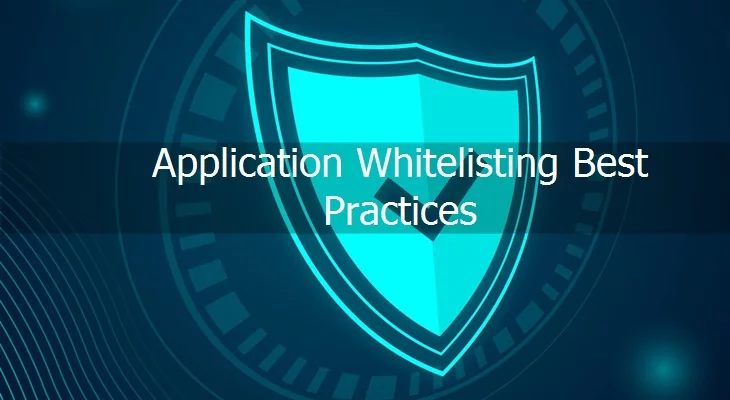Application whitelisting is the process of allowing applications or sets of applications to function within an organization.
This process is the opposite of the blacklisting of application which blocks a set of applications.
Application whitelisting is considered to be one of the safest cyber-security practices as this process only allows the desired/required applications to run through and blocks the rest of the applications.
We will be looking at some of the best practices in this blog. These practices will help you to implement application whitelisting process in your organizational environment.
List of Best Practices for Application Whitelisting
- Internal DNS Servers to operate
- The required Cloud applications for your organization
- Categorize and streamline On-premise applications
- Classify the essential and non-essential business applications and create an access policy
- Permit regular online browsing access
- Categorize and allow access to certain admin tools
- Create a policy to allow access to individuals and groups based on job functions and hierarchy
Internal DNS servers are crucial to safe and secure business operations. Hence you need to allow internal DNS servers to operate within an organization.
This application whitelisting process is one of the most important whitelisting practices.
It allows your IT team to monitor and act against cyber threats and voluntary/involuntary data leaks.
Cloud applications are essential to all organizations. A cyber-security admin needs to acknowledge and classify the essential cloud applications for the business functions and allow access to only those files.
This is one of the standard practices in the application whitelisting process.
There are certain applications that companies choose to deploy on-premise instead of cloud due to privacy, security, or intellectual property requirements.
These on-premise applications are also vital to day-to-day business operations. Hence, as a cyber-security admin, you need to whitelist these sets of applications.
The next application whitelisting best practice includes the classification of essential and non-essential business applications.
You need to whitelist only the essential applications while leaving out the non-essential ones.
As these are crucial business applications, you will also need to define a set of rules that will allow only certain users with these applications.
General online browsing is essential for creative and research purposes within an organization. So you need to allow the general online browsing but with adequate restrictions.
You can combine application whitelisting and blacklisting processes for practice by blacklisting certain websites.
This application whitelisting practice helps the companies to ensure the effective utilization of the company resources.
Also Read: What are the Best Application Whitelisting Tools?
Similarly, there are a few admin tools that you need to allow for a certain set of employees.
And if you don’t whitelist them, none of your employees will be able to access it. To avoid this issue, you need to identify and whitelist certain IT admin tools.
You can use selective access protocol to limit access to these tools. This practice in application whitelisting is more focused on the administrative side.
Along with these application whitelisting methods, you will also need to create a set of rules to monitor and implement these policies effectively.
You will need to define access rules and allocate certain roles and allow specific activities to those roles as well based on hierarchy and job functions.
Key Takeaways:
We can see from the above-mentioned application whitelisting practices that if implemented properly; this technology can help protect your organization from cyberthreats.
Application whitelisting can also help you to improve employee efficiency and cause minimal downtimes.
Also Read: Top 13 APM Tools for Businesses





